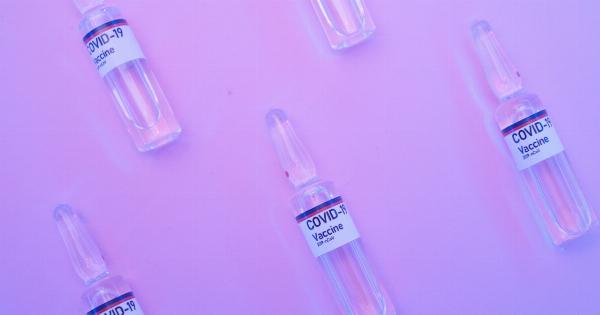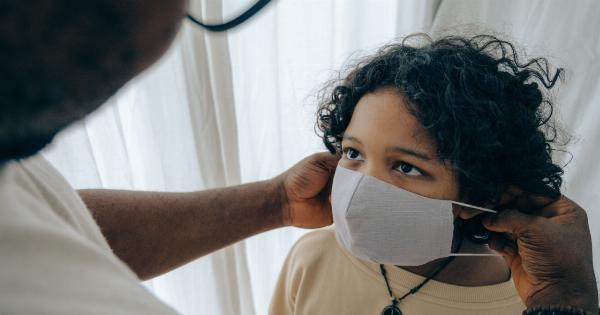Fifth disease, also known as erythema infectiosum, is a common viral illness that primarily affects children.
It is caused by the human parvovirus B19 and is characterized by a distinctive red rash on the face, which gives the appearance of a “slapped cheek.” Although often mild and self-limiting, fifth disease can cause complications in certain groups, such as pregnant women and individuals with weakened immune systems. Understanding the symptoms, causes, and treatment of fifth disease is essential for timely management and prevention of its spread.
Symptoms of Fifth Disease
The symptoms of fifth disease generally develop in stages, with each stage marked by different manifestations. The initial stage is often characterized by flu-like symptoms, which may include:.
- Fever
- Sore throat
- Headache
- Runny nose
These symptoms may last for a few days to a week before progressing to the next stage. The most characteristic symptom of fifth disease is the rash, which typically appears several days after the onset of flu-like symptoms.
The rash starts as bright red patches on the cheeks, giving the face a flushed or “slapped cheek” appearance. After a few days, the rash may spread to other parts of the body, such as the trunk, arms, and legs.
In addition to the rash, some individuals may experience other symptoms, including:.
- Joint pain and swelling, particularly in older children and adults
- Fatigue
- Itching
It is important to note that not all individuals infected with the parvovirus B19 will display the characteristic rash. Some cases may present with milder symptoms or even no symptoms at all.
Causes of Fifth Disease
Fifth disease is caused by the human parvovirus B19, a highly contagious virus. It spreads primarily through respiratory droplets when an infected individual coughs or sneezes.
The virus can also be transmitted through blood or blood products, making blood transfusions and organ transplants potential routes of transmission.
The incubation period for fifth disease, which is the time between exposure to the virus and the onset of symptoms, typically ranges from 4 to 14 days.
During this period, an infected individual may unknowingly spread the virus to others, as symptoms may not be present or may be mild.
Children, particularly those aged 5 to 15, are most commonly affected by fifth disease. Outbreaks are more prevalent in schools and daycare centers, where close contact and sharing of toys and other items facilitate the spread of the virus.
Adults can also contract the virus, although the symptoms may be less severe than in children.
Treatment of Fifth Disease
In most cases, fifth disease is a self-limiting illness that resolves on its own without specific treatment. However, certain measures can be taken to alleviate symptoms and ensure a speedy recovery:.
- Rest: Getting plenty of rest is crucial to allow the body’s immune system to combat the infection.
- Fluids: Staying hydrated is important, especially if fever and flu-like symptoms are present. Drinking water, sports drinks, or clear fluids helps prevent dehydration.
- Fever and pain relief: Over-the-counter medications such as acetaminophen or ibuprofen can be used to relieve fever and manage pain or discomfort.
- Itchy rash management: Applying calamine lotion or taking antihistamines can help soothe itching caused by the rash.
It is advisable to consult a healthcare professional, particularly for individuals who are at higher risk of complications, such as pregnant women or those with underlying health conditions.
They can provide appropriate guidance and monitoring to ensure the best possible outcome.
Complications and Prevention
In most cases, fifth disease resolves without complications. However, certain individuals may be at risk for complications, including:.
- Pregnant women: Parvovirus B19 can be harmful to the fetus, particularly during the first 20 weeks of pregnancy. In some cases, it can lead to a condition called hydrops fetalis, characterized by severe anemia and fluid accumulation in the fetus. Pregnant women who have been exposed to the virus or are experiencing symptoms should consult their healthcare provider for appropriate monitoring and management.
- Individuals with weakened immune systems: People with conditions such as HIV/AIDS or undergoing chemotherapy may be more susceptible to severe complications if they contract fifth disease. For these individuals, close monitoring and medical intervention may be necessary to manage any associated complications.
Preventing the spread of fifth disease is essential, especially in high-risk situations. Some preventive measures include:.
- Frequent handwashing: Proper hand hygiene, including washing hands with soap and water for at least 20 seconds, significantly reduces the risk of infection.
- Covering the mouth and nose: Encouraging individuals to cover their mouth and nose with a tissue or their elbow when coughing or sneezing helps prevent the spread of respiratory droplets.
- Isolating infected individuals: In settings such as schools or daycare centers, it is vital to identify and isolate individuals with fifth disease promptly to prevent outbreaks.
- Proper disinfection: Regularly cleaning and disinfecting surfaces and objects that may come into contact with infected individuals can help reduce the risk of transmission.
Conclusion
Fifth disease is a common viral infection primarily affecting children. While often mild, it is important to recognize the symptoms and take appropriate measures to prevent its spread and manage potential complications.
By understanding the symptoms, causes, and treatment of fifth disease, individuals can ensure timely intervention and promote optimal health outcomes.






























